On Berkeley Soil
Video presentation
Production, script
and narration by L
A Wood
Music: "Crying Waters", Ron
Hacker & Hacksaw Records www.ronhacker.com
The health of a community can be measured by the quality of its
groundwater. This video is dedicated to a better understanding
of groundwater and its many beneficial uses, now and for future
generations.
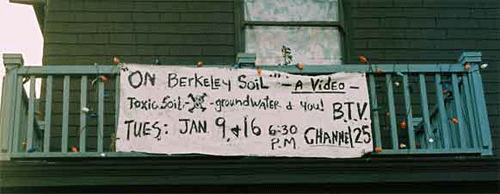 KPFA 94.1 FM Radio Earth Day 95 broadcast:Thousands
of people turned out to celebrate the 25th anniversary of Earth
Day in Washington D. C. Today…Over the last decade, Congress
has passed…including the Clean Water Act and Clean Air Acts,
which environmentalist now say that Republicans are dismantling.
Environmentalists spent the day urging Americans to fight back KPFA 94.1 FM Radio Earth Day 95 broadcast:Thousands
of people turned out to celebrate the 25th anniversary of Earth
Day in Washington D. C. Today…Over the last decade, Congress
has passed…including the Clean Water Act and Clean Air Acts,
which environmentalist now say that Republicans are dismantling.
Environmentalists spent the day urging Americans to fight back
At a fueling station
Hello, We are here in Berkeley, California to investigate contaminated
soil and its impact on both groundwater and the city’s residential
community. A gas station would seem an unlikely location to begin
this discussion, but in truth, it is quite appropriate.
Historically, the practice has been to store gasoline and heating
fuels in underground tanks. Other toxic chemicals, like industrial
solvents, have also been stored there. Our focus today is on the
underground storage of gasoline and diesel because, as you will
see, a large portion of Berkeley’s contaminated soil is
saturated with these hazardous substances.
Plume
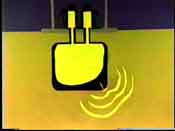 At one time or another, over the last century, gasoline fueling
stations have been located on nearly every corner of our commercial
districts. Most of these sites originally had single-walled, gas
stations. At one time or another, over the last century, gasoline fueling
stations have been located on nearly every corner of our commercial
districts. Most of these sites originally had single-walled, gas
stations.
Often these tanks, when left too long in the ground, develop leaks.
This allowed fuel to seep, uncontrolled, into the soil. The fuel
you see spreading into the soil is called a plume. The rate at
which the plume radiates away from the tank is greatly influenced
by the soil composition.
Most flatland site can be described as sandy clay. Although the
geology differs from site to site, all soils exhibit some permeability.
To identify the extent of a fuel plume, wells are drilled around
the site. Soil samples and groundwater analysis can determine
the point where toxics are no longer detected. Only then can the
total impact be known and a comprehensive cleanup plan crafted.
In Berkeley, investigations have identified nearly 50 gasoline
fueling sites which have some soil that is laced with fuel contaminants.
Typically, fueling tanks are placed about 15 feet underground
in the soil, which puts most tanks into direct contact with groundwater.
No site with soil contamination is absolutely stable since its
contact with groundwater greatly facilitates off-site migration
of pollutants.
Remediation
The cleanup process for fuel-contaminated soil and groundwater
is called remediation. Remediation varies from site to site in
Berkeley, but over the last ten years, the most common method
has been the excavation and hauling of contaminated soils out
of town to regional landfills.
The “dig and haul” cleanup method is chosen by developers
because it is faster. This practice is widely used even though
soils polluted by petroleum hydrocarbon constituents are generally
able to be effectively remediated onsite.
Unfortunately, the relocation of fuel-contaminated soils to other
communities isn’t environmentally responsible. In the last
five years, the remediation industry has begun to use some alternative
cleanup techniques. One such technology is vapor extraction. Contaminants
are drawn from the monitoring wells and then filtered out.
A similar treatment burns extracted vapor, releasing Co2 and water.
Vapor extraction is something that should make neighbors breathe
easier. These newer remedial methods are gradually replacing the
more common on-site.
Aeration
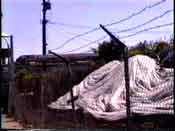 Leslie
Marks: I live next door where there is remediation
work being done. I have now been poisoned out of my house. I’ve
gotten sick from the fumes. They are aerating the soil …so
that its just out in the open air and all of us are getting poisoned. Leslie
Marks: I live next door where there is remediation
work being done. I have now been poisoned out of my house. I’ve
gotten sick from the fumes. They are aerating the soil …so
that its just out in the open air and all of us are getting poisoned.
On site aeration is performed by stockpiling polluted soils in
high mounds or though an active process akin to kneading bread.
Airing soil onsite releases many volatile compounds, like benzene,
into the air. These gases though invisible to the eye, evaporate
much like the water vapor seen here.
Unfortunately, this practice has few restrictions. Aeration is
clearly destructive to the environment and is inappropriate for
any urban setting. This abatement method should be restricted
in all phases of the site cleanup.
Helga Allessio: My name is Helga Allesio.
I have been living in the west Berkeley neighborhood since 1989.
Until just recently, when I found out that the gasoline station
next to us was going to be cleaned up. Initially, I was glad to
hear that because it’s been there since before we moved
in. And it was going on for about 10 weeks into the process when
I started having some health problems and with my family…particularly,
sore throats and dryness in the throat, difficulties in swallowing
and being extremely nauseated, even with the windows and doors
closed.
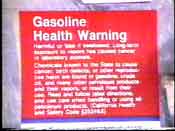 Residents
are wise to be concerned about the health impacts of site remediation.
Very little is known about diesel fuel or the over two hundred
different constituents in THP-gasoline. The few components that
have been studied extensively, like benzene have shown direct
links to cancer and respiratory diseases. Residents
are wise to be concerned about the health impacts of site remediation.
Very little is known about diesel fuel or the over two hundred
different constituents in THP-gasoline. The few components that
have been studied extensively, like benzene have shown direct
links to cancer and respiratory diseases.
Tragically, the tendency is to dismiss the health effects of exposure
to these complex chemicals because so little is known about them.
Helga Allessio: I have learned a lot about
what the aeration process means, however, I do not know how we
will be affected in the long run by this.
Containment Zones
There is a growing controversy about soil contamination and to
what standard, toxic sites should be cleaned. The currently regulatory
swing appears to be towards lessening cleanup requirements which
will result in more hazardous soils being left in place.
Berkeley is being sized up for these proposed changes by what
is being termed as containment zones. A containment zone is simply
defined as an area where the objectives of groundwater cannot
be reasonably achieved.
The concept of containment is founded on a false premise that
lower standards can be good for business because of the cost effectiveness
of doing nothing. Unbelievably, this is somehow supposed to also
be good for the environment.
Let’s examine the issue of containment by first looking
more closely at groundwater and how it is used.
Groundwater
Most of us have an unclear sense about groundwater. The measure
of clean is drinking water safe. It wasn’t that long ago
that our parents, or their parents employed hand pumps which drew
up groundwater for both drinking and irrigation.
Today there are many residential wells all over Berkeley. Though
most are capped, other are still functional.
In our East Bay city, groundwater is often quite shallow due to
the seasonal rains and geology. Because contaminated soils have
so often come in direct contact with the groundwater, our city’s
aquifer has been heavily affected. A survey of sites reveals off-site
migration problems that range from just a few feet up to a quarter
of a mile.
Though groundwater generally flows below the surface, it is directly
linked to our creels, our lakes, and our wetlands, as it moves
toward the bay. Logically, water quality regulations should also
be this closely linked if we are to maintain environmental sustainability.
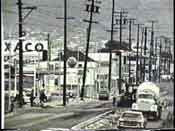 It has been suggested that there are no beneficial uses for our
urban groundwater supply. In truth, groundwater is underutilized.
But, there are a number of important uses for this natural resource. It has been suggested that there are no beneficial uses for our
urban groundwater supply. In truth, groundwater is underutilized.
But, there are a number of important uses for this natural resource.
It has been selectively used for irrigation and even at construction
site. Our recreational activities often bring residents and groundwater
together. Inevitably, groundwater makes contact with all city
surface water because they are hydro logically connected.
Certainly we can’t dismiss the potential benefit groundwater
might play in a disaster like a earthquake, especially if water
supplies or delivery were interrupted for any length of time.
Berkeley’s own special bio habitat supports a special marine
ecosystem and is a migratory pathway for may species. It is hard
to estimate the impact that lower groundwater standards might
have on these animal populations.
Additionally, Berkeley like many communities has had a tradition
of vegetable gardening. No one has calculated the health effects
of this pseudo-containment from this kind of land use.
The ever present problem with water shortages, due to drought
and our state’s tremendous population growth, should compel
us to preserve all our water resources. News reports tell us that
more and more municipal water supplies are failing to meet drinking
water standards. This is not the time to forsake groundwater quality.
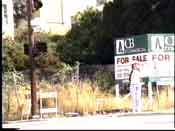 The question has become; what is a reasonable standard for cleanup
of contaminated properties. Perhaps this question will be answered
by the real estate marketing of these stressed parcels, or perhaps
from the growing litigation initiated from adjoining properties
impacted by these toxic sites. This aspect of containment is surly
a municipal nightmare. The question has become; what is a reasonable standard for cleanup
of contaminated properties. Perhaps this question will be answered
by the real estate marketing of these stressed parcels, or perhaps
from the growing litigation initiated from adjoining properties
impacted by these toxic sites. This aspect of containment is surly
a municipal nightmare.
Each generation in Berkeley has had to establish its own response
to the challenge of maintaining a “sustainable” environment.
Over the last three decades, our city’s awareness and efforts
have grown considerably.
Even so, our generation is a turning point. Like most other urban
cities, Berkeley is confronted with its greatest environmental challenge. We are beginning to move in
a regulatory direction from which there is no return. Public notification
of this process is not enough. greatest environmental challenge. We are beginning to move in
a regulatory direction from which there is no return. Public notification
of this process is not enough.
Berkeley, along with other urban communities must stand up and
send a clear message, no containment zones and no lower groundwater
standards. Clean water is everyone's right!
KPFA 94.1 FM Evening News: Earth Day events in Berkeley got
off to an early start today. At 8:30 this morning, environmentalists
demonstrated at San Pablo and University in Berkeley demanding
immediate cleanup of the former Chevron gas station. L A Wood,
Berkeley resident and environmental activist says contamination
from the old gasoline station has migrated off site and has put
residents at risk.
Containment Zone - Water Quality WorkShop in Berkeley 1995 and Regional Water Board Response (below) |

